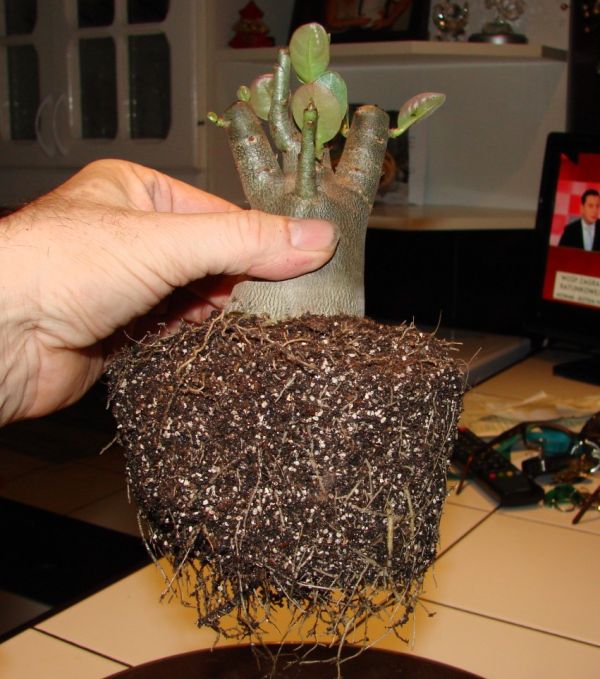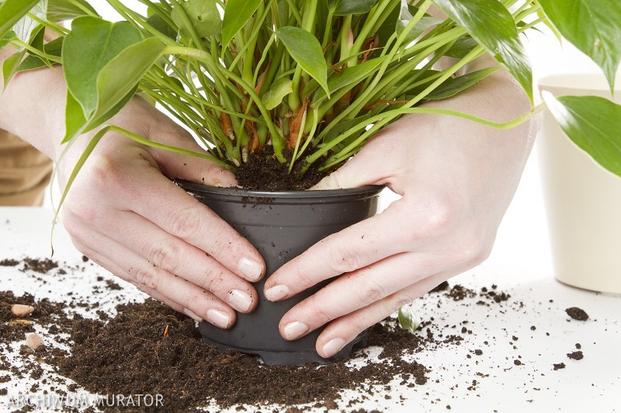 When potting, you first fill in as much soil, that the plant is high enough in the new pot. After repotting, it should not be higher or lower than before. Plants are an exception, who had outgrown the “normal” level, like this e.g. B. in ornamental asparagus (.Asparagus sprengeri rule) is often the case. Also plants, which form roots on the stem (.Philodendron scandens K. Koch and Sello, Scindäpsus äfirens Engler u. a. climbing plants), can be set a little deeper when repotting, to improve their appearance.
When potting, you first fill in as much soil, that the plant is high enough in the new pot. After repotting, it should not be higher or lower than before. Plants are an exception, who had outgrown the “normal” level, like this e.g. B. in ornamental asparagus (.Asparagus sprengeri rule) is often the case. Also plants, which form roots on the stem (.Philodendron scandens K. Koch and Sello, Scindäpsus äfirens Engler u. a. climbing plants), can be set a little deeper when repotting, to improve their appearance.
Dead or rotten roots are carefully removed from the old pot ball and ingrown ones, old shards removed with pointed wood. If the root ball is heavily matted, loosen the surface with a piece of wood (don't rough it up with a knife!). At tubers- and onion plants, whose roots have completely died off during the dormant period, become before the new potting all soil- and root debris removed. This treatment is. B. when repotting perennial cyclamen, Gloxinia and the knight star to be used.
When stuffed, the roots show white tips at the edge of the ball, then this is the sign of healthy growth. With such plants, the new potting must take place with the greatest possible protection of the root ball. After the space between the ball and the edge of the pot with fresh soil (which are not bone dry, but it shouldn't be too wet either!) is filled in, tap the pot firmly several times, so that all voids in the floor are eliminated. If necessary, carefully plug the new soil between the pot and the root ball using a blunt piece of wood.
There is only so much soil when potting- and filled up, that another about 1 to 2 cm rim to absorb the irrigation water or the fertilizer solution.
After repotting, it is thoroughly watered; It is best to use a jug with a fine spray for this purpose, since the earth is easily swept away by a strong jet of water. Care must be taken with further watering, until new roots form. The new formation of roots is promoted by a plentiful supply of oxygen, the only one well ventilated – so not too wet – floor guaranteed.
Fresh in- or repotted. plants, whose life processes are initially more or less sensitively disturbed, put it on a bright one, place protected from direct sunlight, where they don't get any draughts. Have the newly formed roots penetrated the fresh soil?, then they can get the spot that suits their specific lighting needs again.
Finally, it should be mentioned, that one repot more valuable, large ornamental plants such as. B. stately room linden, gum trees or windowsills (Pattern), which are often kept in wooden buckets or similar vessels, should be left to the specialist!
